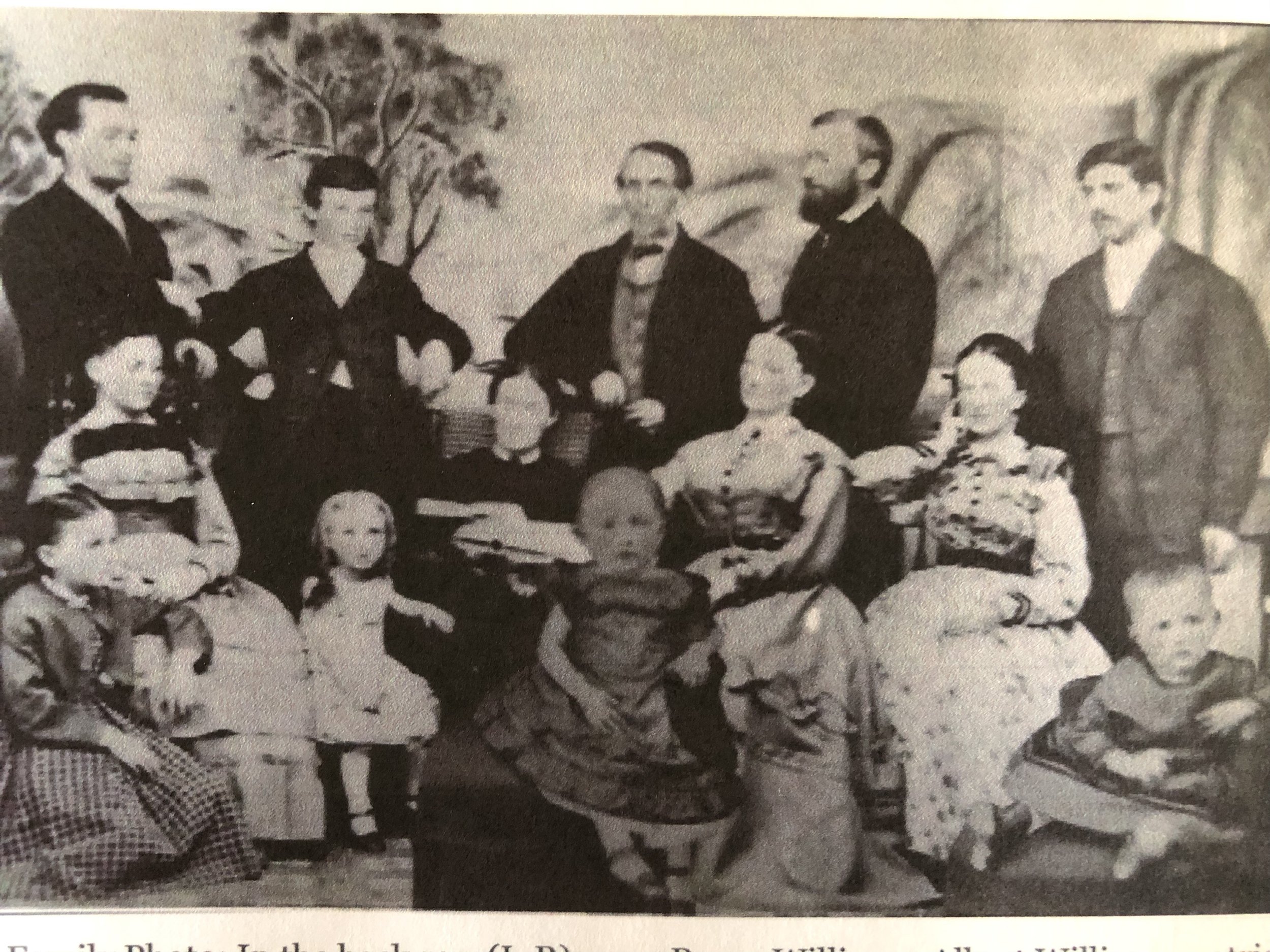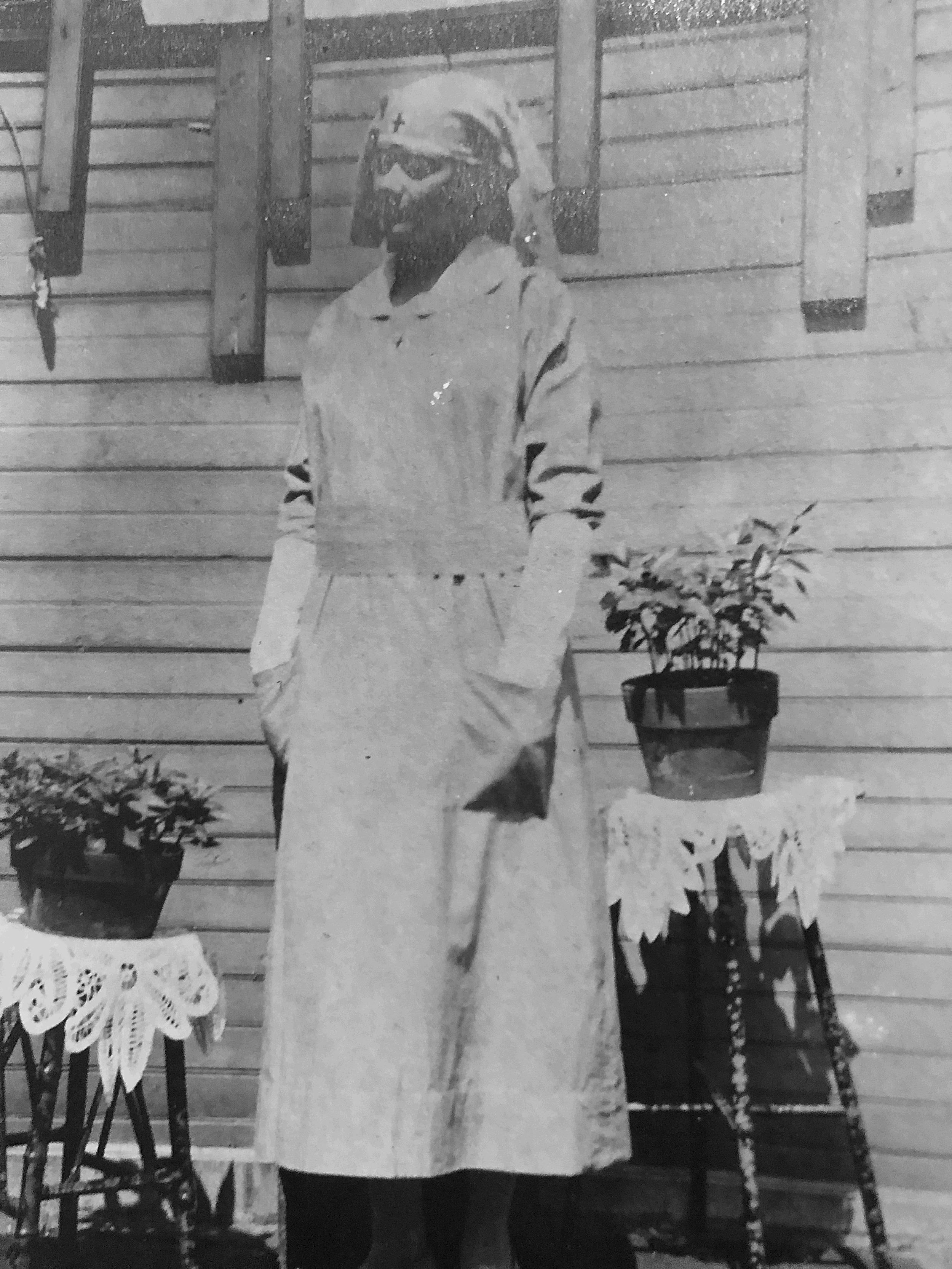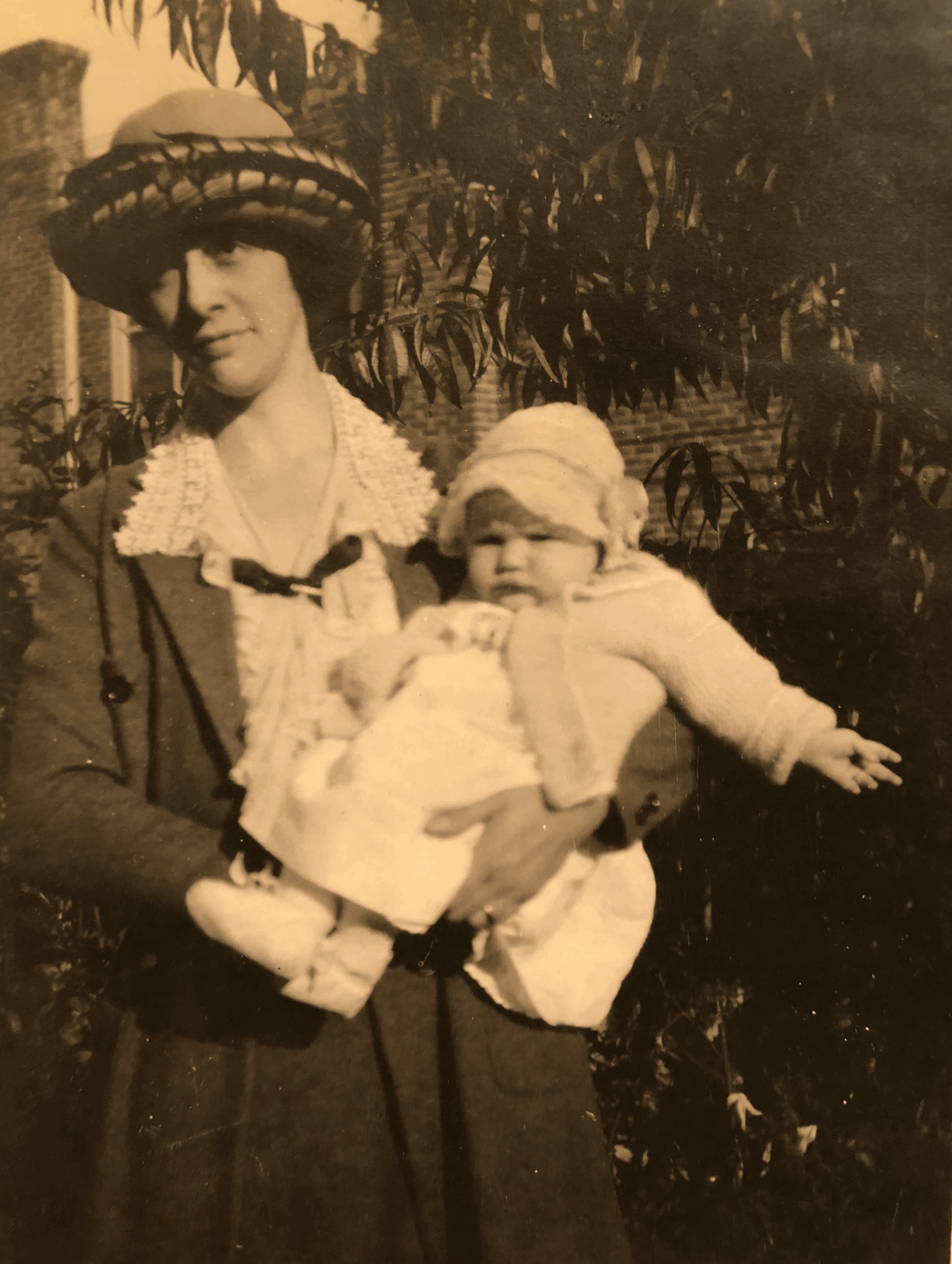
Connecting to our Ancestral Mothers
The author’s second great-grandmother, Elizabeth Davies and her husband, Thomas P. Williams and family. Included on the right is the great-grandparents, Sarah Elizabeth Williams who married George Marsden. Both of these men served in the Union Army during the Civil War. The original photo was taken about 1870.


Stories that last for Generations
I was so thrilled to have Kathryn Finegan Clark, a wonderful writer, interview me for this story that appeared in The Bucks County Herald, on July 9, 2020. The text of that story is included here:
“Stories that last for generations”
It’s the season for family reunions and for the inevitable pulling out and dusting off of the kinds of family stories that begin with “Remember when…?”
Right now in the midst of the COVID-19 pandemic, reunions may be virtual events, but chances are they’ll still be dominated by talk about relatives who are no longer there – the dazzling mom who took off her shoes and danced in a fountain, the uncle who ran away with the circus.
But as generations pass, many of those stories will be lost.
“After three generations, you’re gone,” is the stark but truthful, reminder issued by Judith A. McDowell, who helps families rescue and preserve those fading memories of the personalities and treks into the past.
Judith, who lives in Plumstead Township, is a natural storyteller. As a career fundraiser for nonprofit organizations, mostly performing arts, Judith has devoted three decades to bringing organizational stories to life.
Now, as president of Piper Legacy Press, she’s recording family lore, collecting old photographs and documents, including love letters and those sent home by servicemen. She then conducts further research, turning all the information into handsome books to be passed on to future generations.
In a way, she digs around the family tree, puts together her findings and makes the tree grow leaves and blossoms. With her extensive research capabilities, she often discovers things the people may not have known about their ancestors.
Judith has worked as a fundraiser for the Philadelphia Orchestra and the Opera Company of Philadelphia. Most recently she served as executive director of the Bucks County Choral Society.
She never has strayed far from the arts, though, which is no surprise since she majored in art education at Millersville University. Now she has combined her experience in the visual arts with her writing and research capabilities to create custom-crafted, professionally bound hardcover books.
Her Piper Legacy Press also publishes memoirs, individual biographies, and corporate histories. She likes to say she “takes the mystery out of history.”
Judith honed her skills by joining the Association of Personal Historians. She even served on the board of the organization, which no longer exists, but said it was a wonderful experience. “I learned a lot. I attended some of their conferences and met people from all over the world,” she said.
The genealogy website databases so popular today offer little more than facts – names and dates of birth and death and perhaps ethnic backgrounds and immigration details.
Judith basically fills in the blanks, unearthing and relating some of the events that hold those dates together. Combining her discoveries with detailed information and photographs from family members allows her to construct a real story, a written record future generations will treasure.
Her work requires several interviews with the person or persons whose story she’s writing. She begins with the question, “What do you want future generations to know about your family?” She then assembles family photographs to illustrate the book and does extensive research to flesh out the information she already collected. Judith compiles the facts, writes and edits the story. She relies on her arts background to design the layout and package it in an attractive way.
She also does wedding portfolios, using photos to tell the couple’s story. And then there are wedding favors, called Tiny Stories, featuring 15 tiny story photo panels telling how the bride and groom met and became engaged. “These make great favors for wedding guests. So often the guests only know the bride or the groom, and these share the couple’s story. I even design them to match their wedding colors, if they wish,” she explained.
Pricing for all personal history products “depends on the complexity of the project,” Judith said. She may be contacted at Judith.piperlegacy@gmail.com.
kathrynfclark@verizon.net
The Piper’s Blog…
LEAVE IT TO A WOMAN—Happy Mother’s Day
Florrie and Ruth—Mother and Daughter, 1921
Florrie had two daughters and eight grandchildren
Ruth had six children, 23 grandchildren and 14 plus great-grandchildren
The origins of Mother’s Day in the United States date before the Civil War but it wasn’t until 1914 that Mother’s Day became an official holiday in the U.S. The woman most responsible for founding the celebration was Ann Reeves Jarvis of West Virginia. She was inspired to start “Mothers Clubs,” to help mothers learn how to care for their children. Jarvis also used these clubs as a unifying force between former Union and Confederate soldiers to promote reconciliation in areas still divided over the Civil War, with a “Mothers’ Friendship Day” in 1868.
It was her daughter, Anna Jarvis, following her mother’s death, who conceived a day to honor the care and sacrifices mothers made for their children. Interestingly, she gained financial backing from Philadelphia department store owner John Wanamaker for the first official Mother’s Day in May 1908, three years after her mother’s death. Anna Jarvis celebrated the first official celebration at a Methodist church in Grafton, West Virginia. That same day, thousands of people attended a Mother’s Day event at the Wanamaker store in Philadelphia, Pennsylvania.
Other women who advocated for celebrating mothers included Julia Ward Howe, an abolitionist and suffragette, who wrote a “Mother’s Day Proclamation,” in 1870, asking all women to unite in promoting world peace. Another early pioneer of Mother’s Day was Juliet Calhoun Blakely, a temperance activist from Albion, Michigan, in the 1870’s. By 1912 many states and towns had adopted Mother’s Day as an annual day of celebration. It was Anna Jarvis who established the Mother’s Day International Association to promote the cause and her persistence—through a massive letter writing campaign—got President Woodrow Wilson to establish the second Sunday in May as the official Mother’s Day in the United States. (For further information see History.com/topics/holidays/mothers-day)
However, Jarvis was against the commercialism of Mother’s Day and started a campaign against what she called the “profiteers” of Mother’s Day, which she felt took away from the meaning of the celebration. She urged people to stop buying Mother’s Day flowers, cards, and candies. Today, phone calls and probably FaceTime or other virtual online visits abound on Mother’s Day. Countries around the world have their own celebrations in honor of motherhood that can be traced back to the ancient Greek and Roman societies in honor of mother goddesses. What is a way we can explore the lives of all those ancestor mothers who gave birth to our families in the past?
As a writer of family stories and histories, I have taken this Covid downtime to explore and write stories about six female ancestors in my own family line to come out in a book later this year (more on that later). One ancestral mother by the name of Hannah Penn came to America in the year 1634 from England to the Massachusetts Bay Colony on the wild Atlantic Ocean. Can you imagine what travel on one of those little boats would have been like? Ships coming over at that time were small and packed people in like sardines in a can. Many of them spent six, eight or more weeks at sea, battling ocean storms that blew them off course, or calm seas with no wind, keeping them from making any progress. Food supplies dwindled down to nothing, and often disease such as typhus or smallpox killed many a person before they ever saw land again. Hannah was about 27 when she came over and was not married at that time. She did marry shortly after arriving and had numerous children and lived to the age of 92. One of her great-great granddaughters was Naomi Dickerson, who raised her children and lived through the Revolutionary War. She relied on the bounty of the land—both plant and animal—to feed her husband and family. Naomi fended for her family when her husband Johannis (John) Van Winkle was off fighting in General Washington’s army.
Learning about the lives of these women beyond online ancestry sites, gave me a deeper appreciation and connection to them and my heritage. Delving into this past gave me first, an understanding of the inner qualities and relationships of my ancestors; secondly, an understanding of the dynamics of family relationships that often go from one generation to another and can repeat in subsequent generations; and third, the memories that people share of each other become lost after three generations if they are not written down.
So, on this May 9, 2021, preserve the stories of your grandmothers, mothers, aunts, and daughters. Record them for posterity, then later write them down and preserve their photos. Help bring them to life for future generations of daughters and sons to learn about and from which to learn.
Judith McDowell
Piper Legacy Press
The Piper’s Blog…
With our fast-paced modern life, can we learn about ourselves through a visit to the past?
A building re-imagined: the Please Touch Museum in Fairmount Park, Philadelphia, PA, which was the majestic site of the art gallery for the 1876 Centennial Exposition. Since October 18, 2008, the Hall has served as the home to the fabulous Please Touch Museum for children of all ages.
Recent Posts
The Piper’s Blog will be published to bring you topics of interest reflecting life as we know it as well as life from the past.


